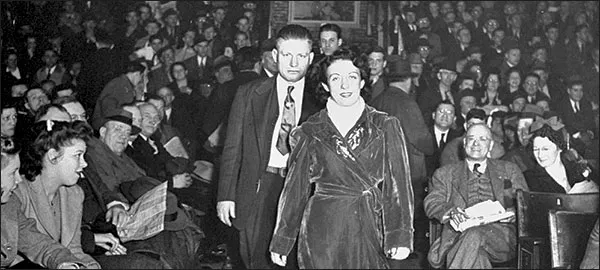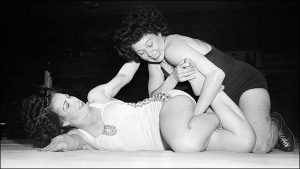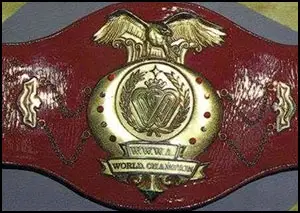by Stephen Von Slagle
Becky Lynch. Charlotte Flair. Rhonda Rousey. Trish Stratus. Madusa Micelli. Wendy Richter. Penny Banner. The Fabulous Moolah. Cora Combs. May Young. All of them, at one time or another, rose to the top of their profession and, individually, became the biggest female stars in the sport of professional wrestling. But, whatever era they rose to stardom in, wherever there success took place, wrestling’s most successful female attractions all have one thing in common, one single factor that, ultimately, enabled them to reach the top of their profession. That common denominator, the reason they were all able to reach the pinnacle of stardom in their chosen field, is because of the trail blazed by one single pioneering woman, the Queen of the Ring, Mildred Burke.
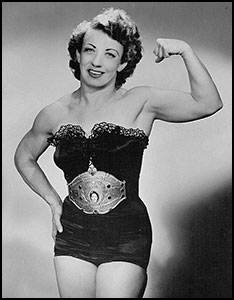 Mildred Burke was born Mildred Bliss on August 5, 1915, in the small Midwestern town of Coffeyville, Kansas. Her childhood was somewhat chaotic, moving to different states with a great deal of frequency before landing in New Mexico. By the age of 17 she was married, relocated to back to Kansas, and hoped to forge a new path there that would lead her to a more stable life. While in Kansas City, her husband took her to a night out and the young couple attended a wrestling card, the first time Mildred had ever seen the sport. She instantly fell in love with the mat mayhem but, unfortunately, the madness she saw in the ring that night paled in comparison to what the teenage bride was experiencing at home. Sadly, her first husband would soon abandon her while she was still pregnant with his child, leaving her in a predicament that no woman should ever have to face. Still, she soldiered on, took a job as a waitress in her mother’s diner and did what she could to make the best of a very bad situation. That, ironically, is when fate intervened…
Mildred Burke was born Mildred Bliss on August 5, 1915, in the small Midwestern town of Coffeyville, Kansas. Her childhood was somewhat chaotic, moving to different states with a great deal of frequency before landing in New Mexico. By the age of 17 she was married, relocated to back to Kansas, and hoped to forge a new path there that would lead her to a more stable life. While in Kansas City, her husband took her to a night out and the young couple attended a wrestling card, the first time Mildred had ever seen the sport. She instantly fell in love with the mat mayhem but, unfortunately, the madness she saw in the ring that night paled in comparison to what the teenage bride was experiencing at home. Sadly, her first husband would soon abandon her while she was still pregnant with his child, leaving her in a predicament that no woman should ever have to face. Still, she soldiered on, took a job as a waitress in her mother’s diner and did what she could to make the best of a very bad situation. That, ironically, is when fate intervened…
When he first met Mildred Bliss in 1935, Billy Wolfe was a former wrestler and an aspiring promoter who specialized in women’s wrestling. At the time, the genre was still quite new to the public and a curiosity of sorts, simultaneously exciting men while empowering women. Sensing opportunity, Mildred implored Wolfe to train her for a career in wrestling. While she was a tiny woman at 5’2″ and 130 lbs., Bliss (who Wolfe soon renamed Mildred Burke) was in tremendous physical condition and possessed an impressive, well-muscled physique. Initially, Wolfe declined her requests, but he eventually came to see an abundance of potential in the petite teenage powerhouse and agreed to train her. Over the following months, Burke worked closely with Wolfe to develop her technique and she adapted quickly to her new profession. At the same time, Burke and Wolfe soon found themselves in a romantic relationship that would ultimately transform into a marriage which, over time, took them to the top professionally yet sunk them to the bottom personally.
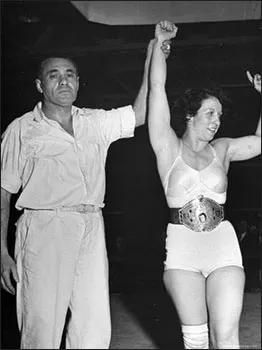 Following her formal training, the nineteen year old began her career in the carnivals, offering $25 to any man who could either defeat her or go ten minutes without being pinned by Burke. She went on to amass a record of 200-1 on the carny circuit and while many of her inter-gender victories were worked, more than a few were gained in legitimate contests. Despite her small stature, Burke was a deceivingly dangerous wrestler who possessed great physical strength and, eventually, extensive knowledge as a shooter. But, after a year or so of wrestling in the carnivals, Burke and Wolfe ran into a problem. Inter-gender wrestling was illegal in most states at that time in history, and while traditional women’s professional wrestling had been in existence for several decades, it was still very much a novelty that also faced legal roadblocks throughout many parts of the country. With the idea of leaving the carnivals and breaking into “big time” wrestling, Burke and Wolfe travelled to those areas where that goal could be achieved. Late in 1936, a determined Wolfe was successful in getting his wife booked into a program with the reigning Women’s World champion at that time, Clara Mortenson. On January 28, 1937, Mortenson dropped her title to Burke in Chattanooga, Tennessee, knowing she would soon regain the title and two weeks later, on February 11, 1937, Mortenson did just that, again in Chattanooga. A “rubber match” was booked for the following April, however, Mortenson and her handlers were not interested in losing the title to Burke again, so, when the time came, Mildred Burke defeated her opponent in a legitimate contest and once again became the Women’s World champion. But, as was often the case during this time period, many promoters who were loyal to the former titleholder simply ignored Burke’s victory and continued to bill Mortenson as champion. Undeterred, Burke, whose popularity around the country by this time was undeniable, would again have her chance at the title and on December 1, 1938, she defeated Betty Nichols in Columbus, Ohio to become a three-time Women’s World champion.
Following her formal training, the nineteen year old began her career in the carnivals, offering $25 to any man who could either defeat her or go ten minutes without being pinned by Burke. She went on to amass a record of 200-1 on the carny circuit and while many of her inter-gender victories were worked, more than a few were gained in legitimate contests. Despite her small stature, Burke was a deceivingly dangerous wrestler who possessed great physical strength and, eventually, extensive knowledge as a shooter. But, after a year or so of wrestling in the carnivals, Burke and Wolfe ran into a problem. Inter-gender wrestling was illegal in most states at that time in history, and while traditional women’s professional wrestling had been in existence for several decades, it was still very much a novelty that also faced legal roadblocks throughout many parts of the country. With the idea of leaving the carnivals and breaking into “big time” wrestling, Burke and Wolfe travelled to those areas where that goal could be achieved. Late in 1936, a determined Wolfe was successful in getting his wife booked into a program with the reigning Women’s World champion at that time, Clara Mortenson. On January 28, 1937, Mortenson dropped her title to Burke in Chattanooga, Tennessee, knowing she would soon regain the title and two weeks later, on February 11, 1937, Mortenson did just that, again in Chattanooga. A “rubber match” was booked for the following April, however, Mortenson and her handlers were not interested in losing the title to Burke again, so, when the time came, Mildred Burke defeated her opponent in a legitimate contest and once again became the Women’s World champion. But, as was often the case during this time period, many promoters who were loyal to the former titleholder simply ignored Burke’s victory and continued to bill Mortenson as champion. Undeterred, Burke, whose popularity around the country by this time was undeniable, would again have her chance at the title and on December 1, 1938, she defeated Betty Nichols in Columbus, Ohio to become a three-time Women’s World champion.
Meanwhile, as their business relationship was skyrocketing and the restrictions on women’s competition began lessening nationwide, Mildred Burke and Billy Wolfe’s marriage was quickly, irreparably falling apart. Wolfe frequently broke his marital vows, while also becoming violent with his wife on more than a few occasions and Burke soon grew to hate her husband. However, the co-dependent nature of their highly successful promoter/talent relationship prevented either from leaving the marriage. Simply put, both had too much to lose by divorcing. With the 1940s came even greater success, as women’s wrestling was experiencing a boom in popularity and Burke found herself wrestling before very large crowds and earning unprecedented sums of money, especially for a female athlete. At the same time, Wolfe was working diligently on developing a roster of new female wrestlers who he could promote and, in many cases, exploit both financially and sexually. While not a particularly admirable man in his personal life, professionally, Wolfe was driven with ambition and a desire to become nothing less than the one and only czar of women’s wrestling. To that end, he was quite successful and in 1949 Wolfe was admitted into the National Wrestling Alliance, where he served as the sole provider of female performers.
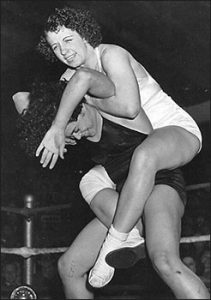 Throughout the decade of the 1940s, Burke went undefeated while defending her World championship in sold-out arenas across the country. But, in 1951, she was involved in a serious auto accident that resulted in several broken ribs, a severe neck injury and a dislocated sternoclavicular joint. While she was not required to forfeit her title, Burke was forced to take some time away from performing to allow her injuries to heal. Wolfe, however, had other plans in mind and he rushed her back into the ring so that Burke could drop her championship to his latest performer (and mistress) Nell Stewart. When Mildred informed Wolfe that she had no intention of losing her title to Stewart, she was beaten severely in the parking lot of a grocery store by Wolfe and his son. The two-on-one assault, which took place in front of Burke’s young son Joseph, resulted in more broken ribs and a beaten face for the recovering Burke. It was the final straw for the long-abused Burke and, despite the inevitable professional and financial repercussions, she filed for divorce in 1952. Being a female, Mildred Burke was unable to join the NWA, however, it was decided by the Alliance that she would be allowed to buy the exclusive rights to the title from her abusive former husband. Paying the lofty sum of $30,000, the agreement also forced Wolfe to sign a contract stating he would refrain from promoting women’s wrestling for a period of five years. Billy Wolfe, of course, had absolutely no intention of abiding by the contract and, very quickly, he began promoting his women and continued with his plans of getting the belt around Nell Stewart’s waist. When the NWA gave Wolfe the go-ahead to stage a tournament in Baltimore that was designed to crown a new women’s World champion, the actual champion, Mildred Burke, immediately sent a telegram to the Baltimore Sun, informing the newspaper that the results of the matches had already been decided upon and Stewart would be winning the tournament. Wolfe, in turn, countered by flipping his plans and having another one of his top protégés (who was also his daughter-in-law), June Byers, come out on top of the tournament. Burke tried protesting to the NWA, but by this point the Alliance had grown tired of the never ending drama between Burke and Wolfe. Rather than aid the longtime champion, its members instead decided to forego the regulation of women’s wrestling altogether.
Throughout the decade of the 1940s, Burke went undefeated while defending her World championship in sold-out arenas across the country. But, in 1951, she was involved in a serious auto accident that resulted in several broken ribs, a severe neck injury and a dislocated sternoclavicular joint. While she was not required to forfeit her title, Burke was forced to take some time away from performing to allow her injuries to heal. Wolfe, however, had other plans in mind and he rushed her back into the ring so that Burke could drop her championship to his latest performer (and mistress) Nell Stewart. When Mildred informed Wolfe that she had no intention of losing her title to Stewart, she was beaten severely in the parking lot of a grocery store by Wolfe and his son. The two-on-one assault, which took place in front of Burke’s young son Joseph, resulted in more broken ribs and a beaten face for the recovering Burke. It was the final straw for the long-abused Burke and, despite the inevitable professional and financial repercussions, she filed for divorce in 1952. Being a female, Mildred Burke was unable to join the NWA, however, it was decided by the Alliance that she would be allowed to buy the exclusive rights to the title from her abusive former husband. Paying the lofty sum of $30,000, the agreement also forced Wolfe to sign a contract stating he would refrain from promoting women’s wrestling for a period of five years. Billy Wolfe, of course, had absolutely no intention of abiding by the contract and, very quickly, he began promoting his women and continued with his plans of getting the belt around Nell Stewart’s waist. When the NWA gave Wolfe the go-ahead to stage a tournament in Baltimore that was designed to crown a new women’s World champion, the actual champion, Mildred Burke, immediately sent a telegram to the Baltimore Sun, informing the newspaper that the results of the matches had already been decided upon and Stewart would be winning the tournament. Wolfe, in turn, countered by flipping his plans and having another one of his top protégés (who was also his daughter-in-law), June Byers, come out on top of the tournament. Burke tried protesting to the NWA, but by this point the Alliance had grown tired of the never ending drama between Burke and Wolfe. Rather than aid the longtime champion, its members instead decided to forego the regulation of women’s wrestling altogether.
Eventually, Wolfe was able to secure a title match for June Byers and he was determined to make sure Burke did not walk out of the ring with her championship belt. He was successful in this goal and on August 20, 1954, in Atlanta, Georgia, Mildred Burke’s sixteen years as the Women’s World champion came to an end in one of the most controversial matches in the history of women’s wrestling. The grudge match, which turned out to be a complete shoot, was scheduled to be a two-of-three falls bout. However, after Burke lost the first fall, Wolfe’s hand-picked referee declared that the match was over and raised Byers’ arm in victory. Since June Byers had only won one fall, Burke felt her title was safe. She was wrong. Billy Wolfe made sure that the local press touted Byers’ title victory and successfully petitioned the NWA to recognize Byers as the new champion, both of which hurt Burke’s claim to the title tremendously. While a handful of matchmakers remained loyal to her, Mildred Burke soon found herself ostracized by the majority of U.S. promoters, ensuring that she was unable to find steady work.
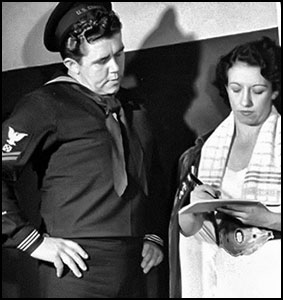 Having seen the writing on the wall, Burke created the Los Angeles-based World Women’s Wrestling Association just prior to her showdown with June Byers and, following the controversial loss, she continued to train new female wrestlers while overseeing the WWWA and serving as its World champion. Viewed as an “outlaw” promotion by the NWA members, Burke’s WWWA was forced to stage its own cards and create its own roster of talent. In 1954, she left the U.S. for a tour of Japan, billing herself as the undefeated World champion. Burke’s matches there proved to be very successful with the Japanese public, planting the seeds for the future of women’s wrestling in that country and leading to the creation of the All Japan Women’s Pro-Wrestling Association.
Having seen the writing on the wall, Burke created the Los Angeles-based World Women’s Wrestling Association just prior to her showdown with June Byers and, following the controversial loss, she continued to train new female wrestlers while overseeing the WWWA and serving as its World champion. Viewed as an “outlaw” promotion by the NWA members, Burke’s WWWA was forced to stage its own cards and create its own roster of talent. In 1954, she left the U.S. for a tour of Japan, billing herself as the undefeated World champion. Burke’s matches there proved to be very successful with the Japanese public, planting the seeds for the future of women’s wrestling in that country and leading to the creation of the All Japan Women’s Pro-Wrestling Association.
In addition to pioneering women’s wrestling in the U.S. and Japan, Burke also introduced the genre of the sport to countries such as Canada, Mexico and Cuba. In 1956, Burke wrestled the final match of her storied career in Cuba and then vacated her championship. Subsequently, the WWWA World championship was revived in 1970 when All Japan Women’s Wrestling bought the rights to Burke’s prestigious World title belt. The popular Japanese promotion would later create the WWWA World tag team title in 1971 and the WWWA All Pacific championship in 1977.
Meanwhile, after the death of Billy Wolfe in 1963 and the retirement of June Byers the following year, Lillian Ellison (a.k.a. The Fabulous Moolah) took over Wolfe’s role as the primary promoter of women’s wrestling in the United States. In the years after her retirement from the ring, Burke continued to promote shows in the southern California region and train new female wrestlers at her facility, “Mildred Burke’s School for Lady Wrestlers.” 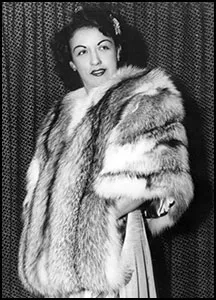 Several of her students went on to make a name for themselves, including Marie Vagnone, Sarah Lee, Sandy Starr and, of course, her most famous student, former WWF Women’s champion Bertha Faye (a.k.a. Rhonda Singh). In 1970, a tournament was held to crown a new WWWA World champion and Burke’s star protégé at the time, Marie Vagnone, captured the vacant title. Then, less than three months later, Aiko Kyo defeated Vagnone in Tokyo and the championship (often referred to as “The Red Belt”) stayed in Japan for the rest of its existence, where it was worn by legendary female grapplers such as Bull Nakano, Aja Kong, Manami Toyota, and the Amazing Kong.
Several of her students went on to make a name for themselves, including Marie Vagnone, Sarah Lee, Sandy Starr and, of course, her most famous student, former WWF Women’s champion Bertha Faye (a.k.a. Rhonda Singh). In 1970, a tournament was held to crown a new WWWA World champion and Burke’s star protégé at the time, Marie Vagnone, captured the vacant title. Then, less than three months later, Aiko Kyo defeated Vagnone in Tokyo and the championship (often referred to as “The Red Belt”) stayed in Japan for the rest of its existence, where it was worn by legendary female grapplers such as Bull Nakano, Aja Kong, Manami Toyota, and the Amazing Kong.
Mildred Burke is a member of the Wrestling Observer Newsletter Hall of Fame (1996), the Professional Wrestling Hall of Fame (2002), and the WWE Hall of Fame (2016)
After suffering a massive stroke four days prior, Mildred Burke passed away on February 18, 1989 at the age 73.


